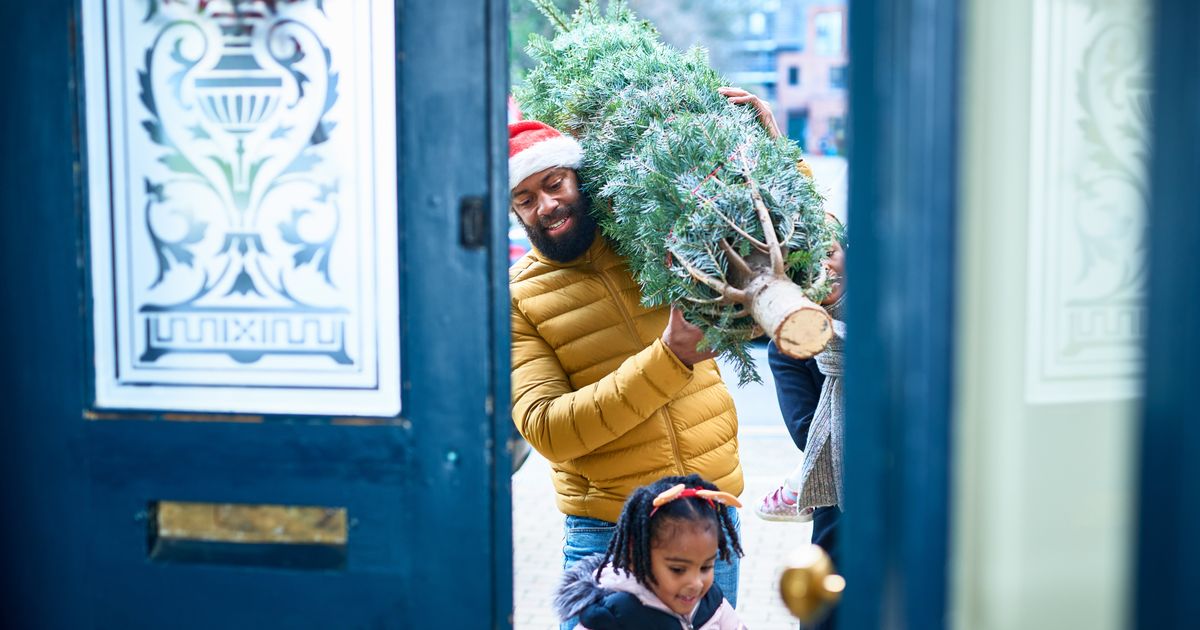Few things are more Christmassy than the smell of pine and fir, which is often the happy result of buying a real Christmas tree. For many, the smell is a true sign of the season. For others, it can be irritating — which is why some people opt for artificial trees as an alternative.
Either way, putting up your festive Christmas tree may tinker with your home’s air quality, according to experts.
Dustin Poppendieck, an environmental engineer in the indoor air quality and ventilation group at the National Institute of Standards and Technology, said that both real and artificial trees can emit chemicals for weeks, a month or even beyond (for artificial trees that are stored in your home all year). And while it’s likely nothing to be overly alarmed about, it’s still worth knowing what’s going down when you’re putting your tree up.
While there isn’t too much research on exactly how much emission both kinds of trees actually create, Poppendieck said there is adjacent research that can inform just what might be happening to our home’s air when these trees are brought inside. Here’s how both real and artificial Christmas trees impact your home’s air:
Real Christmas trees emit a mix of volatile organic compounds.
The pleasant pine scent that your Christmas tree gives off is actually due to a release of a mix of different volatile organic compounds, or VOCs, according to Bryan Cummings, a research scientist in Drexel University’s College of Engineering. Specifically, most of these compounds are known as pinenes and they are what gives the Christmas tree its distinct odor; the same goes for products like pine-scented floor cleaners.
For some people, VOCs can cause minor respiratory irritation when inhaled, he added. According to the United States Environmental Protection Agency, VOCs can cause irritation to your eyes, nose and throat, and can also cause headaches.
While these side effects may be seen in some people, Cummings does not think VOCs from a Christmas tree will have a large impact on the general public’s health either short-term or long-term when compared to all of the items that release VOCs all throughout the year. But, he added that people who are sensitive to irritants of this nature — like people with asthma or certain allergies — may feel extra irritation when they have a Christmas tree in their home.
With a real Christmas tree, you’re also bringing in potential mold and other outdoor contaminants.
Beyond the chemical reaction a real tree could have on the air in your home, “when you’re bringing a tree, you’re bringing in a microbial community in addition to the tree,” Poppendieck said.
In other words, that tree could be offcasting irritants that could potentially trigger asthma or allergies, he added. These irritants can include mold and pollen, according to IQ Air, an air quality group based in Switzerland.
Additionally, Poppendieck noted that any spills when watering a real tree could lead to mold growth, too. Or, if your tree has mud on it, the mud may have additional irritants that can permeate the air.
As for artificial trees, the plastics used to create them may also impact your home’s air.
While many people with severe allergies turn to fake Christmas trees for their holiday cheer, Cummings said these trees, too, may make a mark on your home’s air quality.
“These artificial trees, they contain plastics and PVCs [polyvinyl chloride], and one of the major plasticizers in these materials are phthalates,” Cummings said. Additionally, he said that artificial trees also contain flame retardants.
When it comes to flame retardants, “some of the compounds might be neurotoxins or carcinogens with long-term exposure,” he said.
And when it comes to phthalates, “those are thought to be mostly endocrine disruptors,” which are chemicals that could interfere with your body’s hormones. “There’s lots of research going on in the indoor air quality community especially around phthalates because they’re one of those forever chemicals,” he added. Forever chemicals are manmade chemicals that don’t break down, and as a result, stick around for hundreds and hundreds of years.
What’s more, while they can evaporate into a home’s air, which means you can breathe them in, they can also stick to your hands or other products, giving them the ability to be ingested further and can even go directly into your bloodstream after skin contact, Cummings noted.
“I say that’s a bigger health concern than potential exposure to pine-scented terpenes,” he said.
Crispin la valiente via Getty Images
All of that said, your artificial tree isn’t the only contributing factor when it comes to plastic contamination.
“I also want to say: How many other plastic products do you bring into your home?” Cummings said. Between plastic water bottles, plastic appliances, plastic toys and plastic decor — the answer is probably a lot.
“Are the artificial trees the major source of this pollution? Probably not,” Cummings said.
Additionally, Poppendieck pointed out that “phthalates are commonly found in house dust” beyond the Christmas season. So, no matter what plastics you’re bringing in, the same pollution pattern is happening.
“We know it’s moving from the plastics in our home to the dust,” Poppendieck said.
If you are someone who is very concerned about phthalates and plastics in general, you should avoid artificial trees, Cummings noted. But, if you have many other plastic items in your home, one Christmas tree is not going to change anything.
This is not a cause for panic. Both experts still have Christmas trees.
While both experts said they limit (or do not use) scented home products like scented detergents, body soap and cleaning items, they both have Christmas trees in their homes.
“There’s an emotional attachment that I grew up with,” Poppendieck said, “I like the smell, I like the ambiance and the psychological value.”
He added that when it comes to any indoor air quality topic, you have to balance the physical health impacts with the psychological impact. If your Christmas tree brings you joy, you should not stop getting one to protect your home’s air quality (unless you are one of the few people who deal with severe respiratory reactions) if your home is full of other air quality risk factors, too.
Both experts added that there are many other things in our homes — other plastic items, scented cleaners, candles and gas stoves — that also impact the air we breathe.
There is not enough research to know exactly how much Christmas trees affect our home’s air quality, but Poppendieck said he would be surprised if Christmas trees were a huge risk and would also be surprised if there was zero risk.
If you want to better your indoor air quality, there are things you can do.
Cummings said you should always follow indoor air quality best practices, whether you are bringing a tree in or taking one out.
“So, things I always like to do — clean with soap and water instead of harsh chemicals whenever possible, limit the use of scented products [and] you can always open a window to clear out some of these indoor pollutants,” he said.
You can also use HEPA filters in your home, which “clear out indoor particles and dust,” Cummings noted.
Poppendieck added if you’re really concerned about emissions from either a real or artificial tree, you can set the tree up outside or in a garage before bringing it into your home. This will help lessen the initial indoor emission. But, this step is probably only necessary for those who’ve had historical reactions to trees, he said. It isn’t necessary for the average person.
Beyond air quality issues, remember real Christmas trees are a fire hazard.
“Whenever we talk about indoor air quality, we need to talk about relative risk and how dangerous is a Christmas tree compared to the other things that we do,” Poppendieck said.
He stressed that real Christmas trees have the potential to burn. It’s crucial that you keep your tree watered and remove it from your house if it dies.
This will help reduce the risk of fire when it comes to your real tree, which, Poppendieck said, far outweighs any indoor air quality issues.


